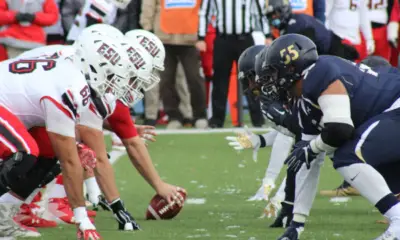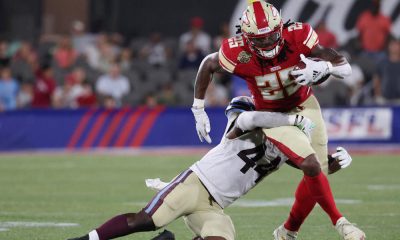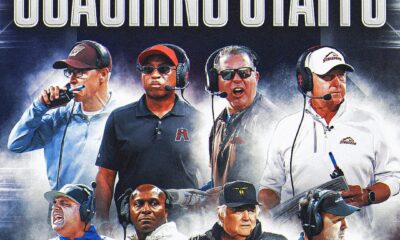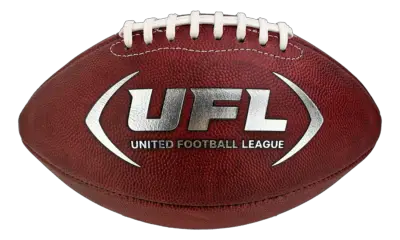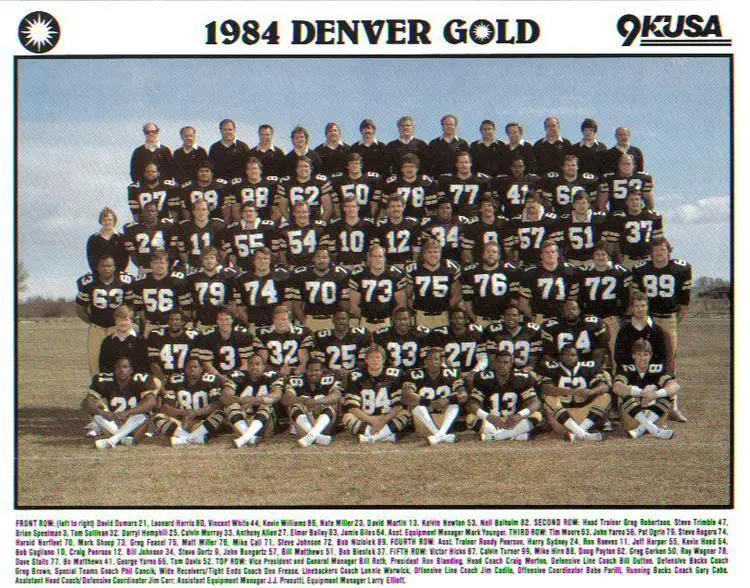
In the last episode, we discussed how great fan support was for the Denver Gold. Despite the overwhelming truth about their owner Ron Blanding being too cheap to truly operate a franchise. I pointed out how after the 1983 draft, often regarded as one of the greatest draft classes ever, Blanding refused to sign any of his first 7 draft picks.
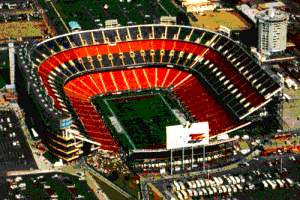
The Other Denver Team
What I left with you with was the fact that Ron Blanding was quite pleased with simply making a profit in year one. He seemed to hold no remorse or qualms about his team finishing 7-11, or firing his head coach midseason. He was simply happy that he had made money.
Was it because Blanding was looking for a way to improve his roster heading into the 1984 season? No, the fact was Blanding seemed to always have one foot out the door when it came to the Gold. He would invest but never go all-in on any one project for the team. Heading into the 1984 offseason it was more of the same.
Despite making a profit, the Gold refused to bring in any prominent free agents or draft picks to supplement the roster. They again went into the 1984 season with a bare-bones roster, except this time they had made moves to further sap the talent from the roster.

Quarterback Competition
In 1984 the Gold had brought in several quarterbacks to compete for the job. Signing former CFL QB, Ron Reeves, acquiring Ken Hobart via trade, and drafting three more quarterbacks. Including CSU Alum Terry Nugent, Air Force Alum Marty Louthan, and Iowa State Alum David Archer.
As if that wasn’t enough talent at QB they also tried to sign 18-year veteran Jim Hart formerly with the Cardinals. Offering him a two-year $500,000 guaranteed contract. While still having guys like Craig Penrose, Bob Gagliano, and Fred Mortenson as well. We saw a total of five different players attempt passes at quarterback for the team. Two of which had a rough time, and couldn’t top a 60% completion rate.
Run Game
Despite the turmoil at the quarterback position, Harry Sydney who had been with the Gold in 1983 as well broke out. The running back was handed the ball 230 times for 961 yards and 10 touchdowns, while also leading the team in receptions with 44 for 354 yards and 2 touchdowns.
His backup Vincent White was used similarly. He would see 114 carries for 397 yards and 3 touchdowns, adding 37 receptions for 321 yards and 2 touchdowns as well. Leonard Harris and Kevin Williams made names for themselves as deep threats averaging over 18, and 22 yards per catch respectively with 4 touchdowns apiece.
Part of why they found success was the offensive line featuring Steve Rogers, Ray Wagner, George Yarno, Tom Davis, and Greg Feasel.
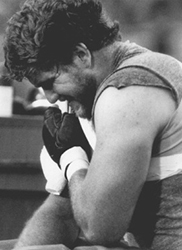
Photo By Eric BakkeThe Denver Post via Getty Images
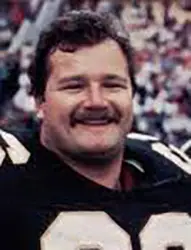
In episode 1 we spoke about how the defense carried the team to 7 wins, and not vice versa. With the defense being their strength, you would assume they want to keep the starting unit together. Not so fast…
They Traded Who??
Ron Blanding and company decided to instead trade away two of their four starting linebackers. This included 1983 leading tackler Paul Choate who had 178 tackles. This all added up to the Gold having one of the lowest payrolls in the league for their players. This fact was not lost on the players either.
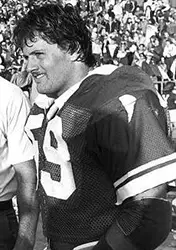
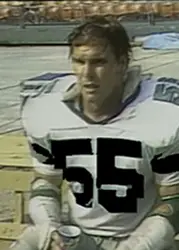
I believe they took it personally that Blanding was not willing to spend any money to go out and acquire free agents or pay his players to keep his team together.
Despite the many ways ownership held the Gold back, they started incredibly hot in 1984. With a 7-1 record after 8 games, rumors began to float out that Blanding was looking to sell the team.
Players and fans at the time were likely relieved hoping their team would find an owner willing to invest in the franchise, and try to find success after their losing season in year one. IF that was the case, they would be sorely disappointed.
The Doug Spedding Era Begins
The man who would buy the Gold from Ron Blanding, Doug Spedding, was known for a string of car dealerships. This would become a significant thing to note for the franchise because he began to run the Gold’s operations out of one of his dealerships.
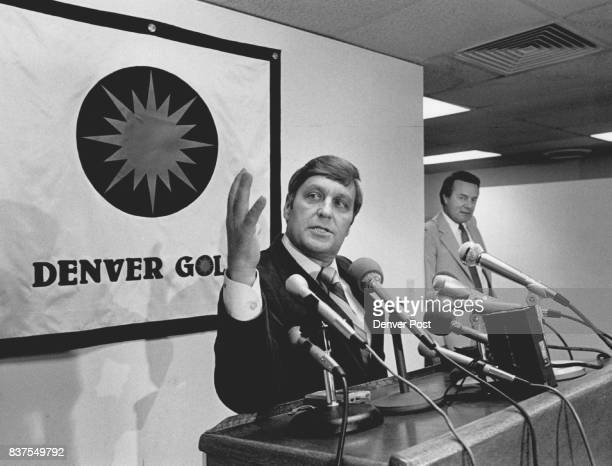
Spedding would purchase the Gold for $10 million in the middle of the 1984 season. Almost as if like clockwork, Spedding bought the team, and they began a losing streak after that saw them win just 2 more games by season’s end. This left them with a 9-8 record.
This was one of many examples of how he would cut costs in any way he could. This didn’t stop him from finding players supporting him as an owner; many players lauded his thought process, and ability to adhere to the original business model for the USFL.
This business model included keeping costs as low as possible, even if it meant at times sacrificing talent much as we saw with Blanding as well. However hearing the criticisms, and watching his team drop games left and right spurred him to action.
Filling Holes
Spedding approved moves to acquire DE Dennis Edwards from the Los Angeles Express, and DE Bruce Thorton from the Chicago Blitz. This ultimately aided an already strong pass rush featuring Dave Stalls and Calvin Turner who combined for 22.5 sacks, with Thorton contributing 6 as well.
At linebacker, the team was forced to acquire a veteran talent to cover up their mistakes. Having traded away Choate, and Kyle Whittingham, who had produced 5 turnovers in 1983, the Gold turned to younger less proven players.
We would see John Bungartz, Greg Gerken, and Kelvin Newton all get chances to start. None of these men developed into quality starters. Due to the lack of talent at linebacker, and the trades to acquire the help on the defensive line, the Gold shifted midseason from a 3-4 front to a 4-3 front. This meant they only needed to incorporate 3 linebackers instead of four.
Having made this move, they then went out and made another trade. This time with the Pittsburgh Maulers to acquire Bruce Hunter from the 3-win team. He would come in and finish out the season as the starting middle linebacker. Pairing with the Denver, Colorado native, and Northern Arizona graduate Greg Gerken. Gerken would play in 16 games, starting 14 of them. Collecting 2 interceptions, 3 forced fumbles, 3 fumble recoveries, and 7.5 sacks.
In the 1984 season, the Gold defense produced a total of 21 interceptions and 51 sacks. Having 2 players post 5 interceptions apiece, while two players topped 10 sacks apiece. The defense was something to be reckoned with after the move to bring in Hunter.
Attendance
According to statscrew.com, their average attendance had fallen, but the team still had 3 games top the 40,000 mark, which they had hit 5 times in 1983. They also set a team record for attendance in 1984 while playing the Houston Gamblers. This topped their previous mark of just over 46,000 fans who showed up to both matches with the Tampa Bay Bandits in year 1.
Granted the average had fallen, but the team still had improved upon their record and added a couple of key contributors for the 85 season. Toward the end of the season, rumors again began to leak from the team. Displaying just how much was going on behind the scenes for the Gold.
These rumors claimed that the new Denver Gold owner was not impressed with Craig Morton as his head coach and that he would look to hire the Gold’s 4th head coach in 3 seasons for the 1985 season. His main focus was to improve upon the offensive production he saw under the tutelage of former QB/OC Morton.
Recognizable Names:
On this roster were some notable players who had football in their bloodlines, and watched as younger members of the family made it to the NFL. Former running back and return man Todd Gehrhart’s son Toby followed in his footsteps playing running back. Having coached him as a boy growing up it was only natural that Toby went on to find success in college, and find his name being called in round 2 of the NFL draft. Toby was able to stay in the NFL for a total of 6 seasons. Playing from 2010-to 2015 with Minnesota and Jacksonville. It’s too bad the USFL hadn’t already launched in 2016. We may have seen the younger Gehrhart play in the same league as his father.

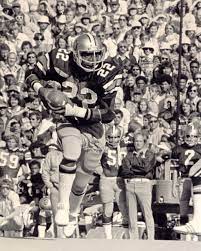
Also on this team was Howard Ballage. He played college football at Colorado University, as a running back/wide receiver. His nephew, Kalen Ballage, a Colorado native, was a 4th round pick a few seasons ago with the Miami Dolphins. He didn’t find success in Miami, instead of moving on to the Los Angeles Chargers. In 2020 he played in a total of 10 games. 2 with the Jets racking up 3 carries for 13 yards. 8 with the Chargers including 2 starts racking up another 88 carries for 290 yards and 3 TDS, adding value as a receiver as well with a total of 29 receptions on 37 targets for 166 yards. This was a career year for Kalen, who now finds himself a free agent yet to find a home for the 2022 season. Could we see Kalen follow his uncle’s lead to the USFL?
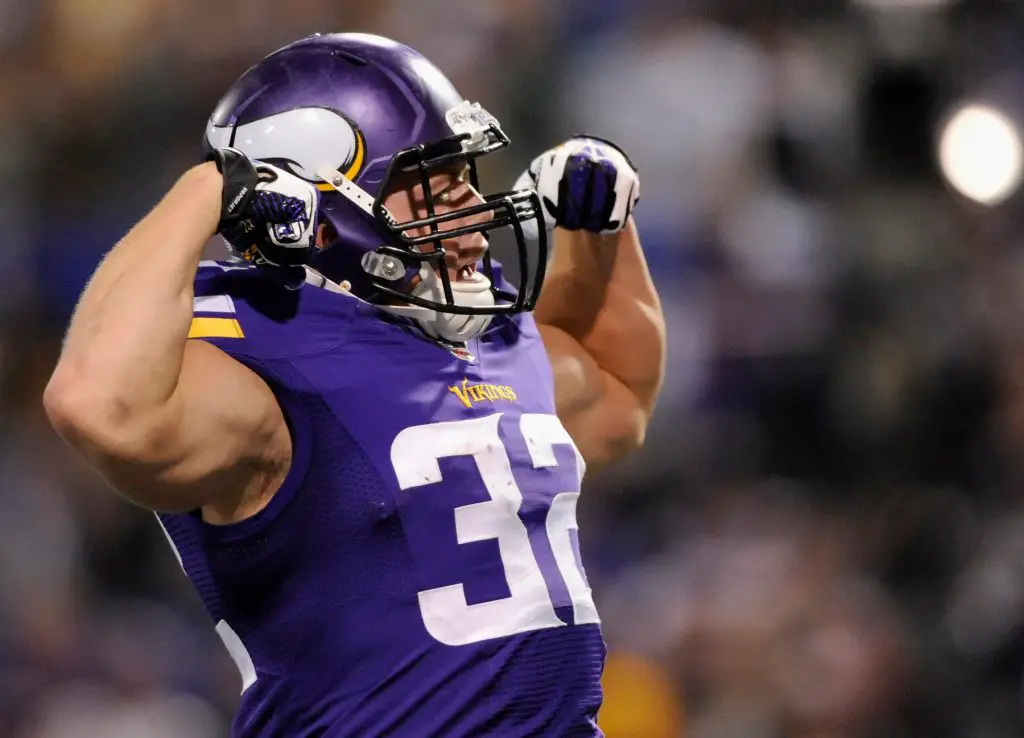
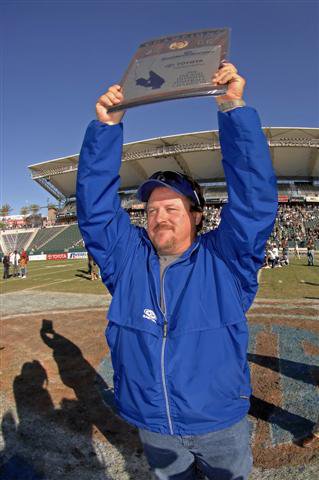
Written by @SamShadySports, please check out my other content and sponsors at the links below. I produce content involving most teams, and several different leagues so stay tuned for the latest news about your team. Also I have teamed with Seat Geek to produce a $20 discount code. If you use the code SamShady at check out you will receive $20 off your next Purchase.
Also Check out my Discord Server where I am working to build a community of football nerds like myself who just love Football whether it’s NFL, CFL, USFL, ELF, FCF etc. https://discord.com/invite/Grtb7fnDyn






